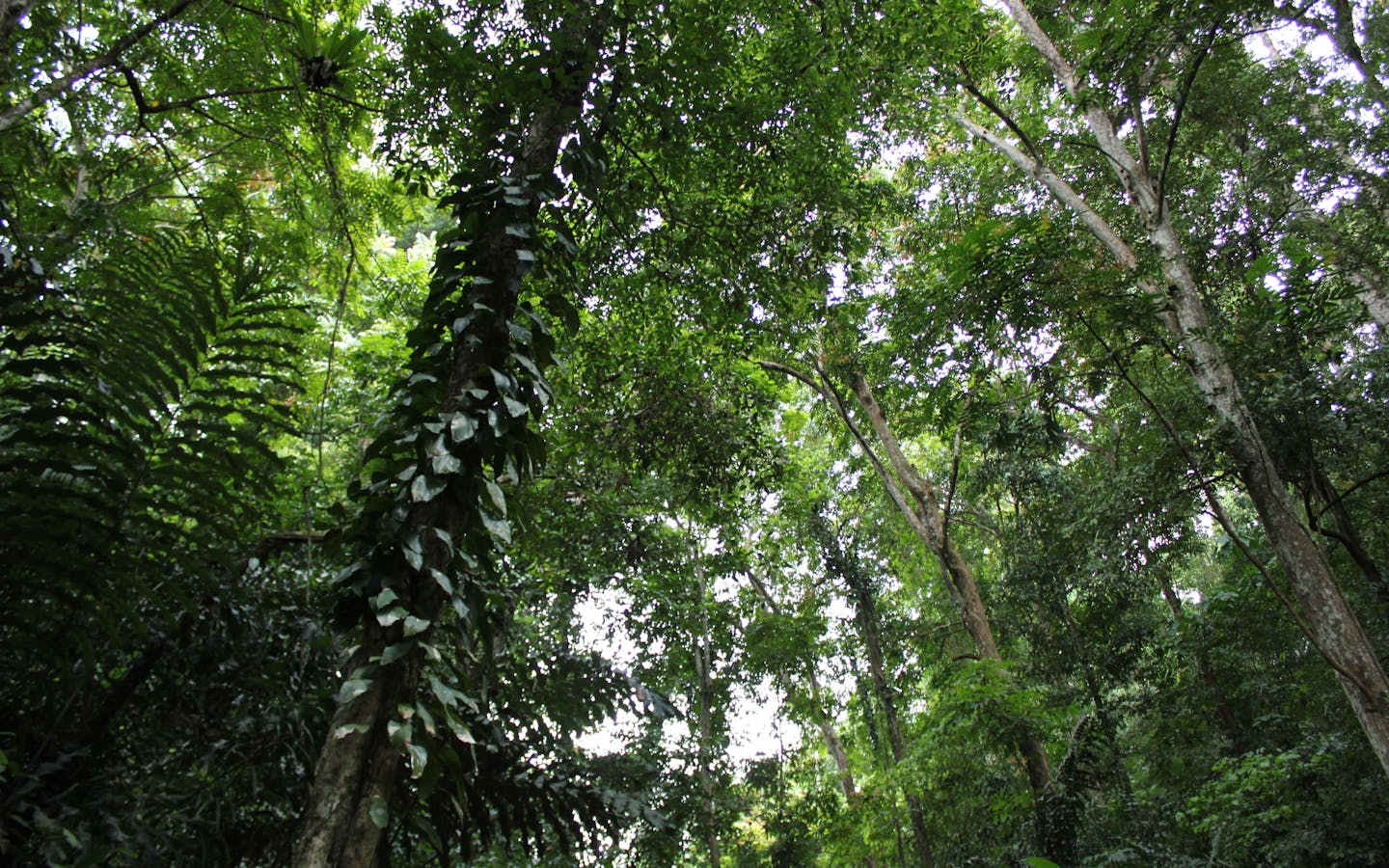The highest peak in Palawan, Mount Mantalingahan, has been home to the indigenous Palawans for thousands of years. With over half its original forest cover remaining, it provides an essential watershed for the 200,000 people who depend on it for agriculture, drinking water and livelihoods.
Mount Mantalingahan forests are valued at US$5.5 billion in the ecosystem services they provide to people. They also play an important role in absorbing and storing carbon — an essential component in the solution to climate change. It is a key biodiversity area, where new species are still being discovered, and recognized for this value as it is one of only 10 sites of the Alliance for Zero Extinction in the Philippines and one of 11 important bird areas in Palawan.
However, like many forests in this region, it faces considerable threats — including illegal logging, wildlife poaching, mangrove loss, agro-industrial development, and unsustainable mining.
Our role
In 2009, with the support of Conservation International, over 120,000 hectares of this range was declared the Mount Mantalingahan Protected Landscape — making it the largest terrestrial protected area in Palawan. This followed several years of scientific studies led by Conservation International, together with strong collaboration and consultation with stakeholders. By collecting all perspectives, a plan was made that integrated both sustainable management practices and the creation of community-based conserved areas — which respected the ancestral domains of indigenous peoples.
We assist the development and implementation of science-based policies, programs and monitoring systems in the landscape. We also sits on the landscape’s protected area management board, which, through the management plan, is focused on the shared goal of zero net loss of forest and ecosystem services in the protected area.
As a result, within Mount Mantalingahan, over 50,000 hectares of ancestral land is now safeguarded with tenures. Nine indigenous communities have been issued a certificate of ancestral domain claim while six indigenous peoples organizations have secured government permits to sustainably gather almaciga resin and honey for their livelihoods.
Our plan
Supporting law enforcement
Conservation International has collaborated with the local government and providing paralegal training and enforcement mentoring sessions to over 45 community volunteers selected to represent specific watersheds. The volunteers have been deputized by their local chief executives and now conduct regular foot patrols in their designated areas. This has instilled a sense of responsibility to protect the community’s natural resources while bolstering the local government’s protection efforts. We have also boosted the protected area’s surveillance efficiency through providing two conservation drones and trained government staff in their operation.
Conservation agreements
Conservation International is enabling and encouraging local communities to protect their natural resources through conservation agreements, which incentivizes community protection activities.
To date, hundreds of families have taken part — and learned the value of conservation along the way — transforming communities from resources users into responsible and sustainable resource managers.
Sustainable financing
In order to maintain the ecological integrity of Mount Mantalingahan Protected Landscape, Conservation International plans to secure long-term financing in the form of a trust fund, so it may endure in perpetuity. This landscape will be the first, out of over 100 protected areas, in the Philippines to pioneer an endowment scheme.
Our achievements

Studying and protecting biodiversity
Mount Mantalingahan is home to over 100 threatened species. Through our biodiversity surveys, Conservation International together with our partners have helped add 20 new species to science, many which may only be found in this range. This includes a new species of finch (Erythrura prasina), a new species of forest gecko (Luperosaurus gulat), and a species of pouch bat (Saccolaimus saccolaimus) previously unrecorded in Palawan. In addition, we rediscovered the Palawan soft-furred mountain rat (Palawanomys furvus), a species that has not been seen by scientists since it was first recorded in 1962.
As of 2016, taxonomists are working to identify a new species of shrew which may be endemic to Mount Mantalingahan, and potentially, a new species of toadlet along with eight new plant species.

Conservation agreements with over 300 local families
Over 300 families have signed conservation agreements to agree to protect their natural assets, and learn the value of conservation. The incentives for community members are plenty:
- Participants attended farm planning and improvement activities such as planting agroforestry species to secure a sustainable source of food and income.
- 180 families are benefiting from water system projects, that transport potable freshwater from hard-to-reach springs to reservoirs, pipes and faucets.
- Paralegal training and enforcement monitoring sessions have resulted in 45 community volunteers being deputized. They now conduct patrols to monitor the condition of the forests and record any illegal activities.
- Guided by their traditional knowledge and practices, the community members have rehabilitated at least 50 hectares of degraded forest – through planting native trees.




